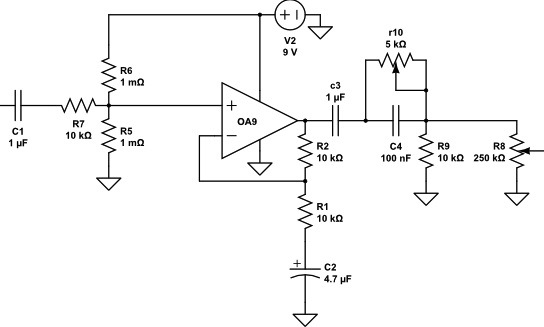Hi there
I need some expert advice on calculating the input impedance of this buffer preamp. I have found several conflicting methods, and would like to publish accurate specs.
I have seen the voltage divider rule i = 1/ (1/R6 + 1/ R7)
and some others have said to take the value of the first resistor to ground R5 at 1 meg
a prominent builder lists a similar arrangement as 1 meg in his specs.
This is a single stage and single supply ac coupled voltage amp buffer for piezo transducers, and preamp for magnetic pickups, with the bare minimum parts count.
I would ideally like 1 meg input impedance. And I dont really want to push up the values of R5 & R6 for introducing more johnson noise before the amp
R7 is necessary not only for the obvious current limiting, but especially to flatten out the frequency response and keep the phase shift to a minimum ... at a cost of a few db
I have used 1K for R7 in several previous designs but sims have shown flatter response and far better phase shift at 10K.
So what is the proper method for calculating input impedance with the 3 resistor wye divider?
many thanks!


